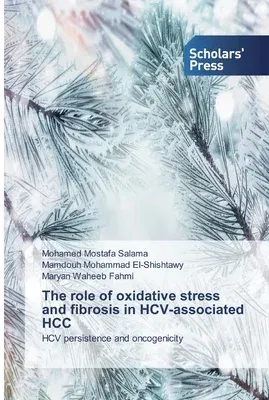Mohamed Mostafa Salama
(Author)The role of oxidative stress and fibrosis in HCV-associated HCCPaperback, 11 March 2019

Qty
1
Turbo
Ships in 2 - 3 days
In Stock
Free Delivery
Cash on Delivery
15 Days
Free Returns
Secure Checkout
Print Length
184 pages
Language
English
Publisher
Scholars' Press
Date Published
11 Mar 2019
ISBN-10
6202310855
ISBN-13
9786202310857
Description
Product Details
Book Format:
Paperback
Country of Origin:
US
Date Published:
11 March 2019
Dimensions:
22.86 x
15.24 x
1.07 cm
ISBN-10:
6202310855
ISBN-13:
9786202310857
Language:
English
Pages:
184
Publisher:
Weight:
276.69 gm

